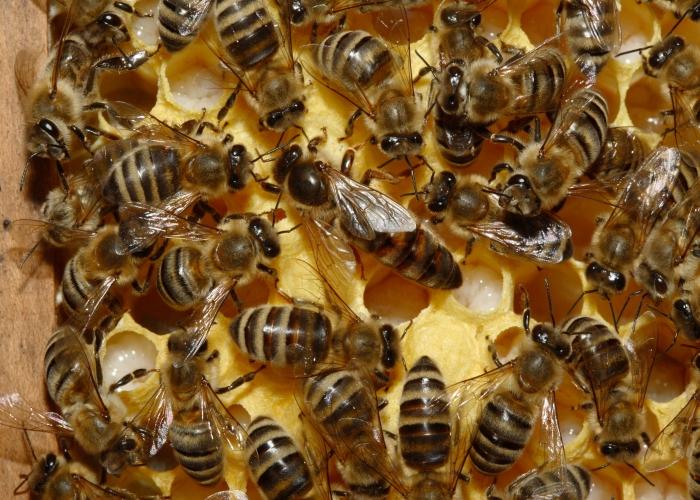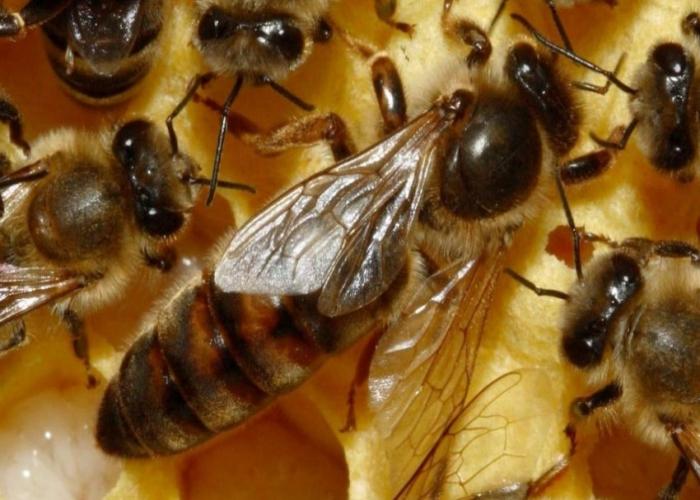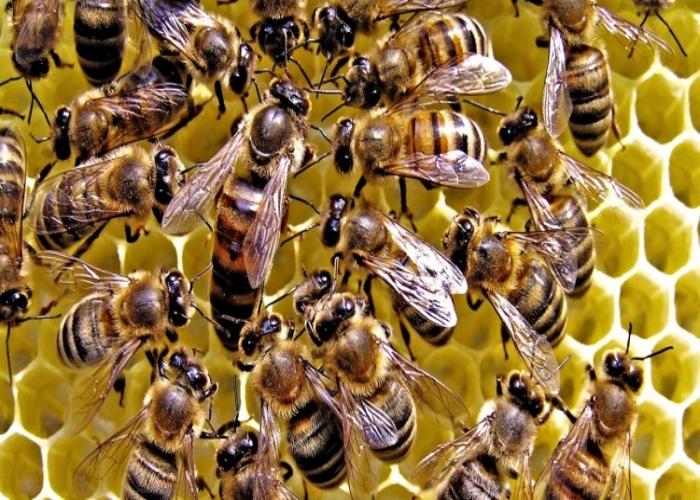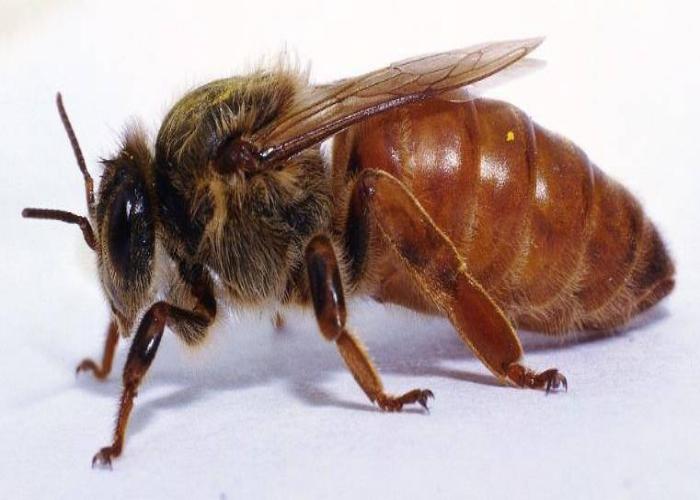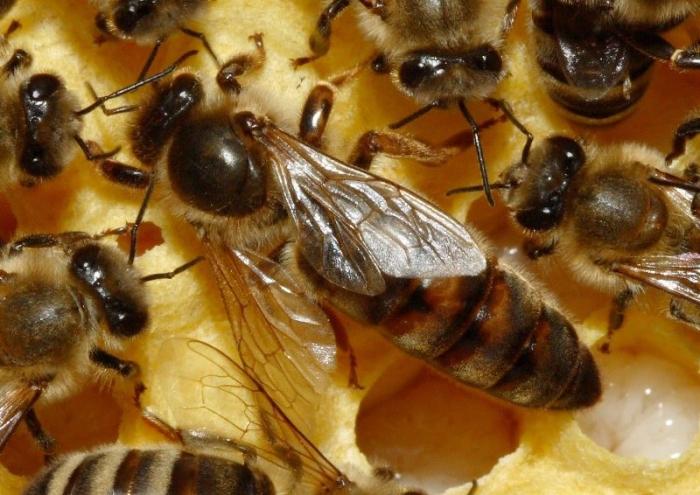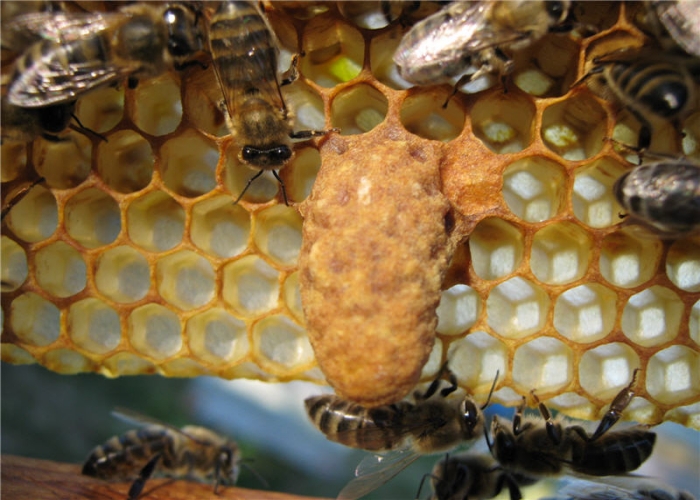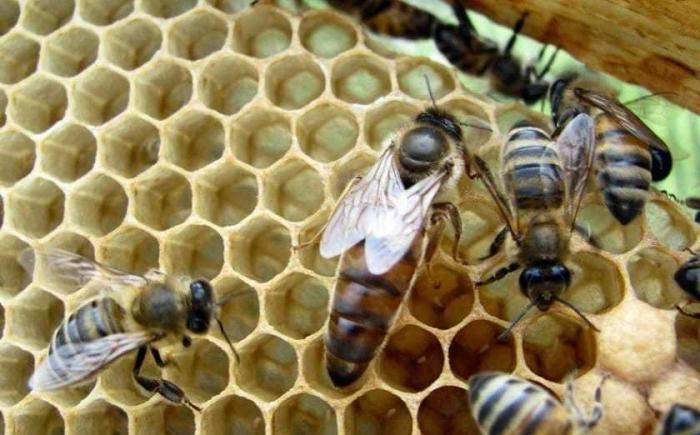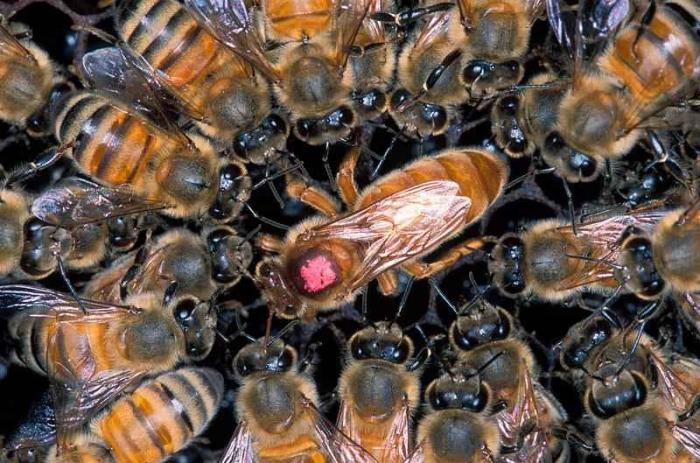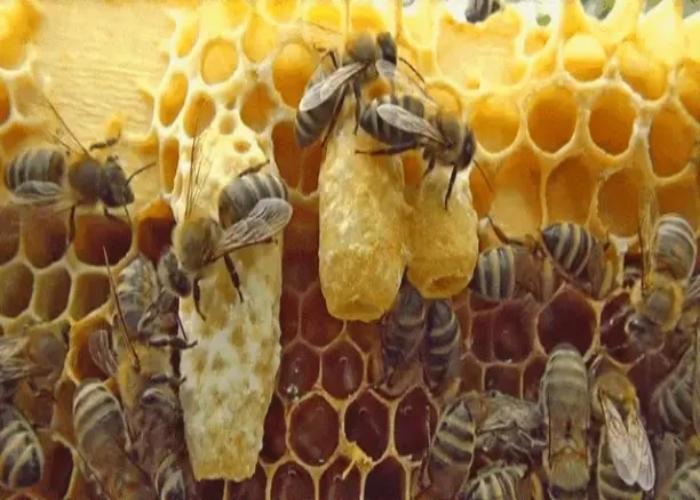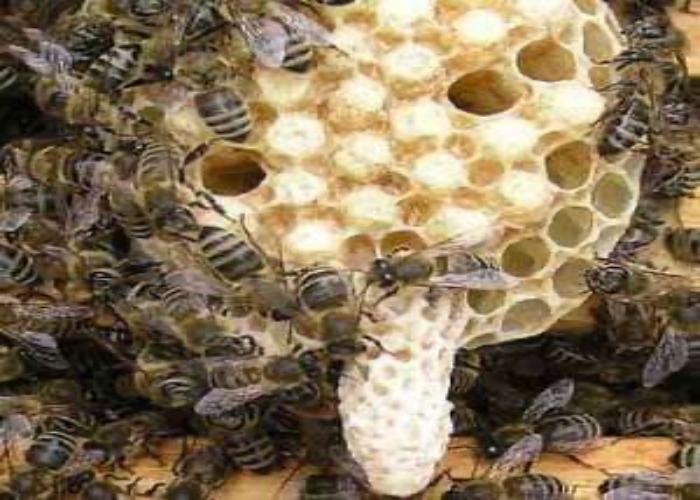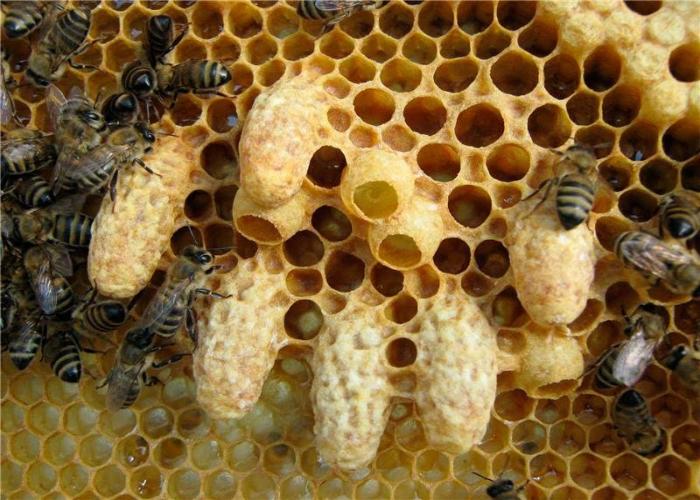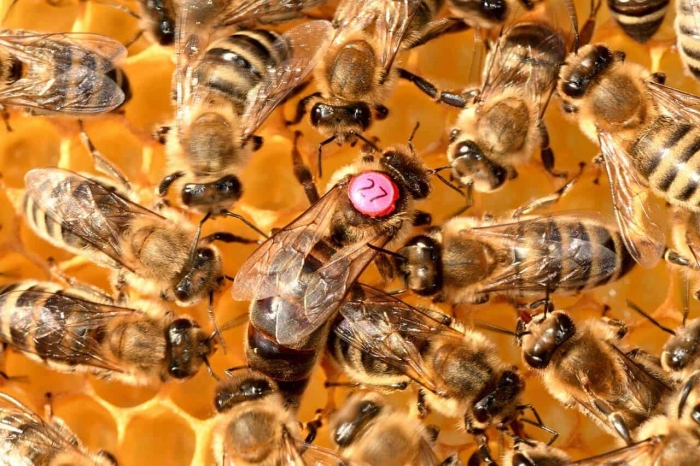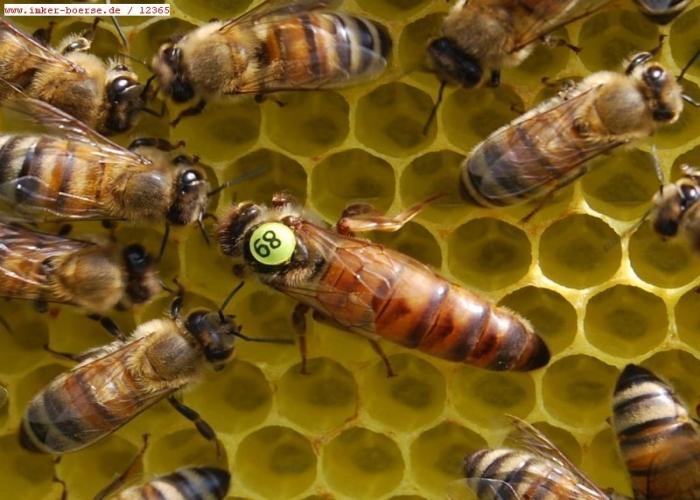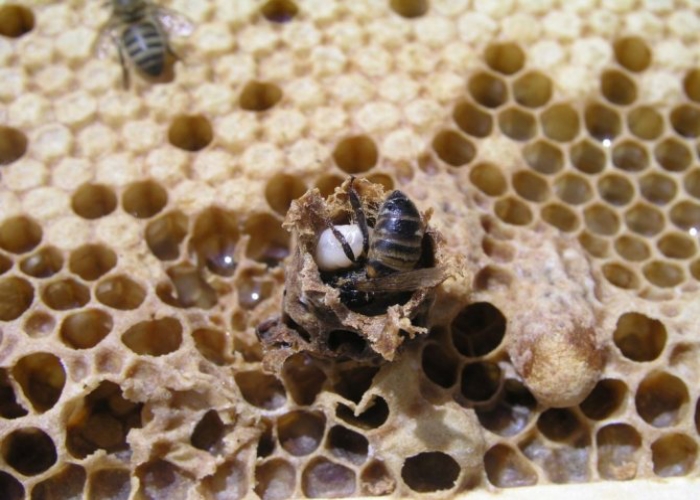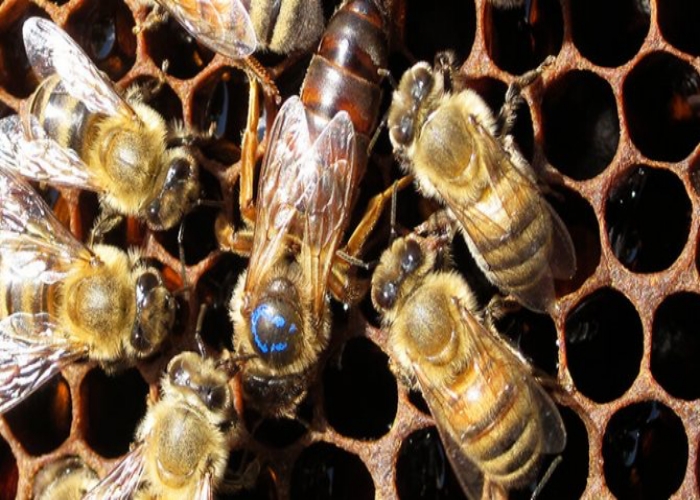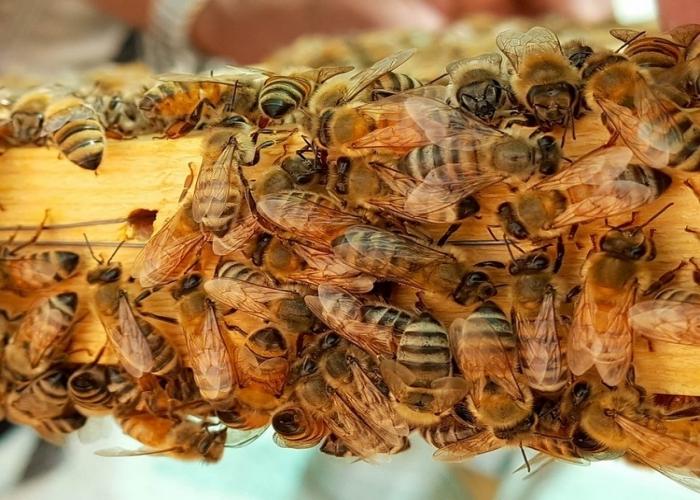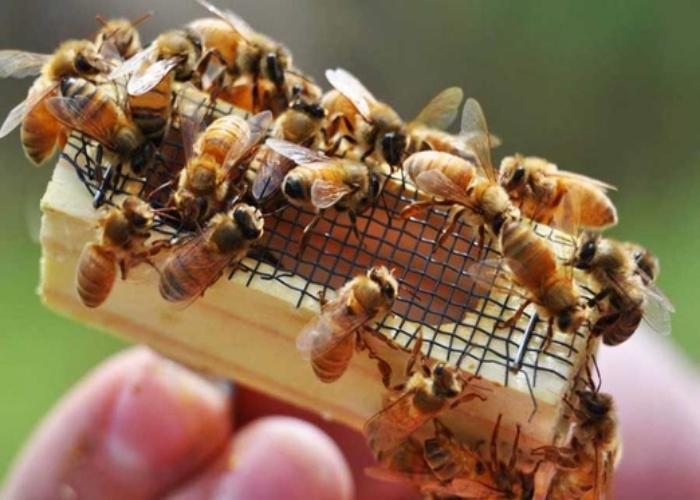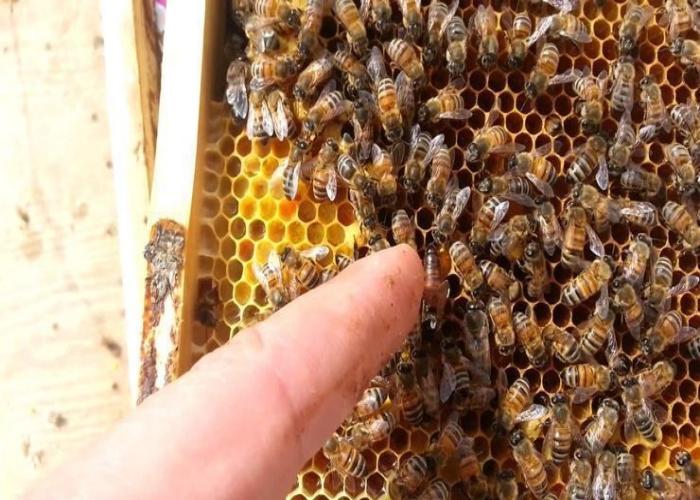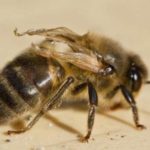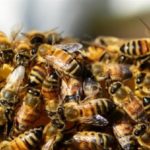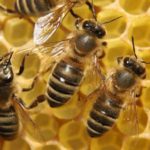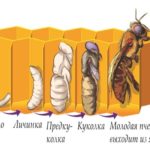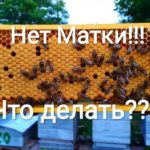A queen bee is a female insect that is capable of reproducing. This individual is characterized by well-developed genitals. At the same time, it can be easily distinguished from other insects. The queen is 2 times larger than the rest of the hive inhabitants. Each bee colony has only one queen. The queen cannot stand competition, so she kills other females and becomes the only egg producer.
What does the uterus look like
The queen bee can be easily distinguished from other individuals. The female is born quite large.Adults also have significant differences from worker bees. The queen bee reaches a length of 2-2.5 centimeters - this is 1.5-2 times longer than ordinary working insects.
The features of the external and internal structure of the queen include the following:
- Elongated torpedo-shaped body. At the same time, the abdomen is much longer than the wings.
- The eyes are smaller in size compared to other inhabitants of the hive.
- The internal structure is characterized by only one feature - well-developed ovaries.
- The queen bee has a sting, however, unlike other bees, she can use it many times - this does not pose a threat to life.
Functions of the queen bee
The queen bee performs the following functions in the hive:
- lays eggs;
- maintains order in the hive;
- brings families together.
Ultimately, the queen bee affects the productivity of the entire colony. Scientists believe that certain bee behaviors are credited to the queen bee.
Thanks to the pheromones secreted by the queen, insects have the same smell. By this feature, bees distinguish their own individuals from strangers.
Place in the family
The entire life of the swarm revolves around the queen bee. Worker bees care for and feed their queen. The queen does not eat honey. She requires special food that contains a lot of proteins and lipids. Therefore, the queen bee feeds on royal jelly. There should be a single queen in the hive. If another female appears from somewhere there, then she is destroyed by the queen herself or other bees. Drones are responsible for fertilizing the queen bee.
Varieties
Depending on the breeding method, there are several types of queen bees. Swarming and fistulous individuals appear naturally. At the same time, a person can provoke the removal of the uterus of a quiet change.
Fistula
When a queen dies, the bees quickly notice the loss. At the same time, a hum arises in the hive, which resembles a howl. In this case, the insects begin to look for the queen. If their searches do not lead to results, the insects begin to raise a new mistress of the hive. At the same time, they begin to feed the larvae only with royal jelly. This product is only used for 2 days. Then the larvae are given a composition based on beebread and honey.
About 20 queens are hatched 16 days after fattening. They kill each other with their stings.
As a result, the strongest individual survives. Uteruses obtained in this way are called fistulous. Their disadvantage is the low level of egg laying.
Fistula individuals develop in very small cells with a diameter of 5.5 millimeters, and not in special free queen cells with a diameter of 9 millimeters. Larvae can be thinned out by merging adjacent cells, but this process is considered very labor-intensive. That's why beekeepers rarely do this.
Swarm
To breed such a queen, queen cells are placed along the edges of the combs. The base resembles a built-in bowl. The female lays eggs in it. They are subsequently cared for by bees who are familiar with the growing process. The number of swarm queen cells varies. As a rule, it is 10-20.
A disadvantage of swarming individuals is the presence of the so-called swarming gene. In such a situation, there is a threat that the colony will have a tendency to swarm.
Silent exchange
In this case, the old queen is quietly preparing a replacement for herself. She lays eggs in special cells and continues to lead a quiet lifestyle. At the same time, the bees are doing their usual things. After 16 days, a new queen bee appears and immediately kills her mother.
The silent shift uterus is removed in the following cases:
- the beekeeper plans the situation;
- the queen bee is old or sick.
Quiet shift queens are characterized by the highest quality. They are considered the most worthy owners of hives.
Who fertilizes the uterus
The drones fertilize the queens. They inject sperm into the paired oviducts of the uterus. During mating, several million sperm accumulate, which are stored in the sperm receptacle of the queen bee throughout her life.
Sperm is present in the seminal vesicles of drones. During mating, it penetrates under pressure into a special canal, and from there it enters the paired oviducts. The movement of the substance is ensured by mucus, which is secreted by the accessory glands of drones.
The uterus needs a specific number of sperm - 5-7 million. If during 1 flight the queen does not receive the required amount of sperm, then the process is repeated. If there is no mating for 1 month, the queen loses the ability to mate. As a result, the queen becomes a drone and stops flying.
Mating and fertilization are considered separate processes. During the mating flight, the uterus only receives sperm, which are subsequently used to fertilize the eggs. Queens and workers emerge from them. In this case, the drone emerges from an unfertilized egg.
The maximum activity of the uterus in producing offspring is observed during the first two years. After which the number of eggs decreases. The process starts later and ends earlier. At the same time, more and more eggs remain unfertilized. In such a situation, the queen bee needs to be replaced.
Lifespan
The life cycle of the uterus is 5-8 years. Fertile females actively lay eggs during the first two years, after which their productivity noticeably decreases.When the sperm supply runs out, the queen begins to lay unfertilized eggs, from which drones emerge.
Bees change the queen in advance to maintain the intensity of reproduction of offspring. In industrial production, annual replacement of queen bees is practiced. This makes insect farming more profitable. This approach is considered a reliable prevention of swarming.
What to do if the uterus dies
If the uterus dies, it has to be replaced with a new one. Different methods are used for this:
- The bee family carries out the replacement on its own. After the loss of the dominant individual, the colony begins to become restless. Literally after a few hours, the bees begin building cells to produce a new individual. However, to grow it, insects require eggs that are laid in the hive. Maturation occurs 16 days after egg laying.
- It is grown from a larva. In this case, the beekeeper places closed fruit combs into the hive. Honey and pollen are added there. After about 1 hour, pre-diluted larvae are placed into the honeycombs. New queen bees are born after 2 weeks.
- An artificially raised queen is introduced. In this case, the beekeeper purchases a ready-made female, which is grown artificially.
The queen bee is an important individual, without which insect breeding is impossible. The queen is responsible for the reproduction of bees, so the workers take care of her and provide food.

